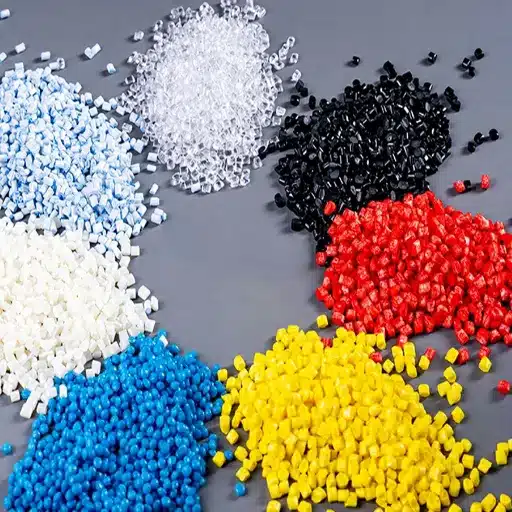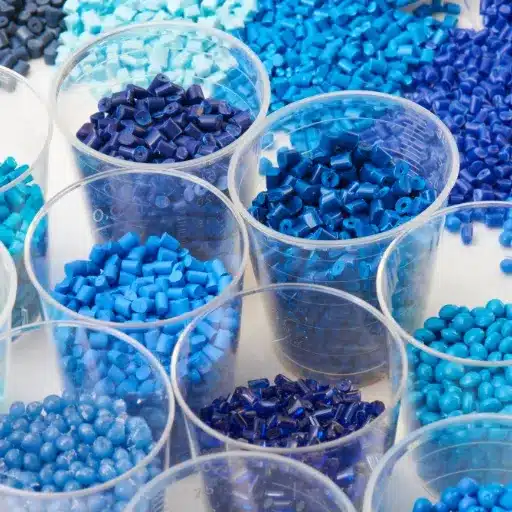Choosing materials for everyday items one uses in day-to-day life is not as simple as it appears, especially if heat is a consideration. Polypropylene (PP) plastic, widely used in water bottles, containers, and kitchenware, is usually advertised as heat-resistant and durable. But what does it withstand, say, boiling water? This article focuses on the safety and functionality of PP plastic in high-temperature situations, addressing critical concerns such as chemical leaching, structural failure, and usable form, to address the burning issues. This is a one-stop guide, whether you want to know the science behind PP plastic or expert tips on the best practices to follow for safe measures.
What is PP Plastic and Its Heat Resistance?

Everything from food-safe containers to textiles utilizes Polypropylene (PP) plastic. It can be molded into different shapes because it is both lightweight and durable. It is best known for its high melting point of about 130°C (266°F), which means it has a relatively high heat tolerance. PP plastic withstands boiling water (100°C or 212°F) for short periods, allowing it to maintain its structural integrity and making it suitable for food prep and use in microwavable containers. Exposure to high levels of heat for extended periods can, however, weaken the material over time, posing a risk of deformation or chemical leaching. These factors are essential in understanding the safe and practical applications of PP plastic in high-temperature situations.
What type of plastic is PP?
Thermoplastic polymers, such as polypropylene (PP), are used in a multitude of industries because they are versatile and durable. Propylene monomers are polymerized to create this material, which is classified as a polyolefin. PP polypropylene is lightweight, resistant to chemical corrosion, has good tensile strength, and elasticity. It is of great value in the medical field and is also extensively used in packages, automotive components, and textiles because PP can sustain repeated stress from the environment. Moreover, its melting point is between 130°C and 171°C (266°F and 340°F), which means it can withstand heat-related procedures without a significant decline in quality.
How does the melting point of polypropylene compare to other plastics?
When compared to many standard thermoplastics, Polypropylene has a higher melting point, ranging from 130°C to 171°C (266°F to 340°F). Another Type of Polyethylene (PE) has a significantly lower melting point, ranging from 115°C to 135°C (239°F to 275°F), based on its density. Some other plastics, like polycarbonate (PC), have considerably higher melting temperatures, ranging from 225°C to 265°C (437°F to 509°F), making them suitable for high-temperature applications. Polypropylene has an intermediate melting range, providing a balance between heat resistance and ease of molding. This makes it ideal for sterilization and thermal processing, while forming is easier compared to other higher melting plastics.
Is PP plastic generally considered safe for hot liquids?
Polypropylene (PP) has a melting temperature of approximately 130 degrees Celsius to 171 degrees Celsius, which is equivalent to 266 degrees Fahrenheit to 340 degrees Fahrenheit. This warm PP can withstand significant heat without losing its chemical strength, making it a popular selection for vessels, water bottles, and food storage containers. Because PP is also chemically inert, it is safe to use with hot liquids since it does not leach dangerous materials. Even at high temperatures, it’s safe with PP. However, constantly exceeding the recommended temperature range can damage the material’s structure. Overall, for most day-to-day purposes, PP is an appropriate material when dealing with hot liquids.
Can You Put Boiling Water in a Plastic Water Bottle Made of PP?
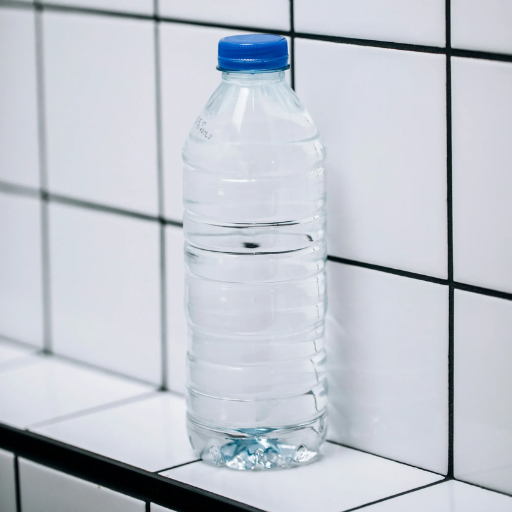
Yes, boiling water can be placed in a water bottle made from polypropylene (PP) plastic, as it is designed to withstand high temperatures without leaching harmful substances or losing its structural integrity. Polypropylene plastic is heat-resistant and generally safe when it comes to liquids at or near boiling temperatures. It is essential, however, to check that the specific water bottle is labeled as food-safe and suitable for hot liquids, as not all PP products are intended for such use.
What happens when boiling water is poured into a plastic bottle made of polypropylene (PP)?
When pouring boiling water into a plastic polypropylene (PP) bottle, the material should retain its structure because its melting point is relatively high, typically between 130°C and 171°C (266°F and 340°F). This thermoplastic is used in food containers and storage because it does not warp and degrade under high temperatures. That said, prolonged exposure to extreme heat may increase the rate of damage, causing some deformation and reduced lifespan of the material over time. Furthermore, while PP plastic is considered safe to use with boiling water, the bottle itself must be marked as food-grade and designed explicitly for high-temperature liquids to ensure that no harmful chemicals, such as toxins, seep into the water.
Are there specific types of plastic that can hold boiling water?
Indeed, some forms of glass, as well as other thermoplastics, can resist high temperatures, including boiling water, without damaging the structure or releasing toxic chemicals. One such material, known for its usefulness in the healthcare industry, is Polypropylene (PP), which has a high melting point of almost 130°C (~266°F) and is also chemically resistant. As a result, PP is commonly used for making reusable food containers, kettles, and baby bottles.
Also, Polyetherimide (PEI) is a plastic known for its exceptional thermal stability and resistance to heat. PEI sustains scorching temperatures above 200°C (392°F), which allows it to be used with other materials that withstand constant boiling or superheated water.
Lastly, Polysulfone (PSU) and Polyphenylsulfone (PPSU) are advanced, heat-resistant, laboratory-grade plastics that can be used in medical devices. Both materials can endure numerous amounts of damage, including high-temperature steam and boiling water, while still operating under heavy structural stress.
When using boiling water on plastic, particular attention needs to be paid to the materials used to mitigate the above issues. All these materials need to be explicitly marked as food-grade and high-temperature certified to avoid the risk of any chemical leaching.
What should you consider when using a PP plastic container for hot liquids?
It’s essential to verify if a given polypropylene plastic container has the appropriate safety markings before using it for hot liquids, as it relates to the container’s thermal resistance. Polypropylene does have a high melting point, which ranges between 130-170 degrees Celsius (266-338 degrees Fahrenheit). Therefore, it is appropriate for containing hot liquids since it will not deform or emit dangerous chemicals. Regardless of its heat tolerance, one must ensure that the container is marked ‘food grade’ or ‘deli style’ to confirm that it does not contain any additives or secondary materials that could pose a danger. Furthermore, repeated use at high temperatures could potentially weaken the container’s structure over time. Users must also determine if the container is microwave safe. This designation, along with others, demonstrates that the container has undergone additional scrutiny, which can strengthen confidence in its thermal and chemical resilience. Proper care, such as preventing scratches or damage that could mask contamination of the surface, further enhances the reliability and durability of PP containers with hot liquids.
Is Boiled Water Safe in Plastic Containers Made of PP?
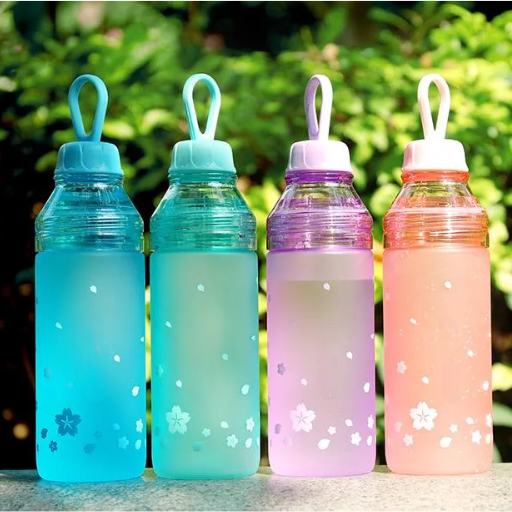
Generally, it is claimed that boiling water is safe to use in PP containers because polypropylene (PP) is designed to withstand high temperatures, including boiling water, up to its melting point, which is approximately 248°F (120°C). However, users should ensure the container is marked as food-safe and does not have scratches or visible damage, because scratches and warping can compromise its effectiveness.
Does boiled water leach harmful substances from PP plastic?
Polypropylene (PP) is considered one of the more benign plastics used in the fabrication of items that come into direct contact with food and beverages due to its relatively stable nature and low risk of leaching chemicals under normal conditions. Research suggests that boiling water does not lead to a considerable yield of harmful compounds, such as bisphenols or phthalates, because PP in most cases does not contain these materials. On the other hand, there is the possibility that other, more benign materials, such as oligomers or additives incorporated during the fabrication process, may be released into the liquid under intense heat or prolonged exposure. The amount of leaching is contingent on the level of production, the quality of conditions, maintenance, and aging of the material. If maximum safety is desired, food-grade Polypropylene containers should be used, but they should not be reused frequently or exposed to temperatures beyond the recommended range.
What types of plastic are BPA-free and safe for boiling water?
The boiling water is hot, and not all types of plastic can withstand such high temperatures. It is well recognized that polypropylene (PP) can be safely used in these situations, compared to other types of plastic. Furthermore, PP is also labeled as number 5, which indicates that it is resistant to heat and does not leach harmful materials into food or drinks when exposed to boiling water. Other BPA-free alternatives, such as Tritan copolyester, are also well-known for being tough and free of BPA.
Even if the type of plastic does not contain BPA, one needs to check the manufacturer’s details to see if the BPA-free plastic has been tested for thermal abuse and if it has a specified heat resistance limit. Otherwise, an error might occur. Specialized laboratory-grade containers use high-engineered plastics. Often, these composites are designed to handle thermal stress and are always stringent in their testing. Make sure the containers are certified by the FDA or an organization that guarantees the same level of safety, to ensure they can be used to store food or beverages at elevated temperatures.
How to sterilize water bottles using boiling water?
When boiling water is used to sanitize water bottles, it’s essential first to check that the bottle can withstand high temperatures. Most stainless steel bottles and some BPA-free plastic bottles can withstand the boiling process without damaging the material or leaching harmful chemicals. Begin by taking apart the bottle. Caps, silicone seals, and other detachable parts should also be removed so that every component is clean. Rinse the bottle with clean water to remove any residue.
Now, place the water bottle in a pot of boiling water. Ensure it is at a rolling boil for 10 minutes to thoroughly cook off bacteria, viruses, and any other pathogens. After 10 minutes, carefully remove the bottle and other parts using sterile tongs and set them on a clean, designated area to air dry. Refrain from using towels, as they might contaminate the bottle. This method effectively removes most pathogens, since most non-porous surfaces can be sterilized at temperatures higher than 212°F (100°C), as long as there is adequate time.
What Are the Risks of Using Plastic with Boiling Water?

There are various dangers associated with subjecting plastic to boiling water. Types of plastic that contain bisphenol A (BPA) or phthalates can severely impact health if boiled because they release dangerous chemicals that can seep into the water. Moreover, boiling water can damage the surface of some types of plastic by softening it, which can cause it to become warped, cracked, or deformed. These risks can be minimized by checking whether the plastic is labeled as heat-resistant or safe for boiling water.
What happens to plastic when exposed to boiling water?
Depending on the type of plastic and its composition, its structure may change when it is exposed to boiling water due to the rearrangement of its chemical chains. Polycarbonate and polyethylene, two common types of plastic, may emit toxic chemicals like bisphenol A (BPA) during high-temperature treatment, which poses serious health risks. Plastics also suffer from structural molecular degradation, meaning they become weaker, less elastic, and less stable overall over time. For example, amorphous plastics will warp and distort more easily due to their low resistance to heat, while crystalline plastics may partially melt or crack. Increasing temperature also speeds up oxidation processes, weakening the plastic over time. To mitigate these problems, it is best to use heat-resistant plastics, such as polypropylene, or other materials certified as food-grade for high temperatures.
Can high temperatures warp or damage plastic bottles?
The polymers utilized on plastic bottles make them more vulnerable to bending or damage at higher temperatures. For instance, the glass transition temperature of polyethylene terephthalate (PET), used in beverage bottles, is approximately 70 °C (158°F). Near or above the heating threshold, these materials become softer and more easily bendable. Furthermore, constant elevation in temperature can lead to heightened thermal decomposition, which may result in the release of toxic chemicals or weak microstructures that damage the bottle.
Other widely used plastics, such as High-Density Polyethylene (HDPE) and Polycarbonate, also offer an interesting case in terms of thermal tolerances. While these do provide some resistance against deformation or structural weakening, they are not fully reusable. Research indicates that repeated cycles of heating or direct sunlight can put molecular stresses in the plastic, which significantly increases the chances of bending or fracturing. To overcome this problem, many manufacturers use other thermally resistant materials or modify their designs. In most cases, however, these additions do not protect the structural usability and integrity of the bottle.
What should you know about the different types of plastic used for water bottles?
There are different types of plastics employed in the fabrication of water bottles. Each of these has properties that affect the performance, durability, and safety of the water bottles. Polyethylene Terephthalate (PET) water bottles are the most common. This is because of its lightweight, transparency, and recyclability. PET is usually said to be safe for single-use, but it can be hazardous when it comes to reusing water bottles. If a water bottle is not cleaned correctly, it can lead to bacterial growth. Another popular choice is High-Density Polyethylene (HDPE), known for its chemical resistance and strong durability, which is often used in reusable bottles.
Polycarbonate (PC) was commonly used for clear, dishwasher-safe water bottles in the past, but its use has declined due to the potential leaching of Bisphenol A (BPA). To counter these issues, many companies turned to using BPA-free materials, such as Tritan plastic, which has lower risks than BPA without compromising the essential properties that plastic needs. Finally, LDPE and Polypropylene (PP) are used in specific shapes and designs because they are flexible and impact resistant. These features make them ideal for rugged uses and compressible water bottles. Knowing these characteristics of materials helps make it easier to choose the right water bottle made from said material with the right design for optimal ergonomic, health, and ecological impacts.
How to Choose the Right Plastic for Use with Hot Liquids?
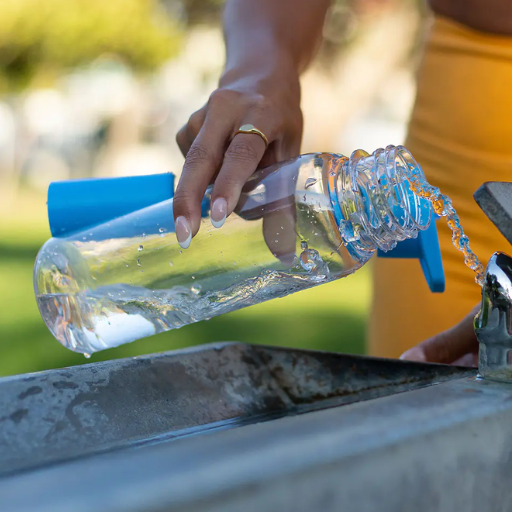
Attention to detail is required when selecting plastic material for hot beverage vending, because weak construction materials can soak or dissolve in high-temperature liquids. For instance, polymers like polypropylene (#5) have a high melting point and do not release dangerous substances. Additionally, for health safety, the product must be marked as ‘BPA free.’ Lastly, ensure that the plastic without metal parts is deemed safe for food or drink, and follow any temperature restrictions suggested by the manufacturer.
What is the best plastic for holding boiling water?
When selecting a plastic capable of safely holding boiling water, specific types demonstrate superior performance in terms of heat resistance, chemical stability, and safety for food-grade applications. A typical example is high-density polyethylene, also referred to as HDPE, which is designated by the recycling symbol #2. Despite being classified as an advanced engineered plastic, HDPE is still quite accessible and has immense potential. It boasts exceptional thermal resistance and keeps its strength at high temperatures, making it perfect for use with boiled water.
Newer developed materials for Polysulfone (PSU) provide even stronger temperature control without changing form or leaking chemicals, making it perfect for advanced uses. Alternatively, PC Polycarbonate is one of the most suitable options, as it is known for its significant deflection at high temperatures, along with toughness. Most PC users need to check and ensure that it is made of BPA-free polycarbonate material.
To maintain safety and optimal performance, it is necessary to evaluate whether the selected plastic is classified as food-safe and complies with FDA standards. Alongside this, producers often indicate the highest temperature limit that can be sustained for maximal use.
How does HDPE compare to PP for heat resistance?
While both HDPE (High-Density Polyethylene) and PP (Polypropylene) remain among the most popular thermoplastics, they differ significantly in terms of heat resistance. HDPE can tolerate moderate temperatures of around 120°C (248°F) without losing its shape or weakening, making it ideal for regions with moderate heat exposure. In contrast, PP has higher heat resistance, able to withstand temperatures of about 130°C to 170°C (266°F to 338°F), which allows it to excel in significantly hotter environments.
Moreover, PP has a lower risk of deformation than HDPE when it comes to temperature changes, making it more stable at higher temperatures. This makes PP preferable for more demanding situations involving sustained heating, like food containers used in microwaves or industrial components subjected to cyclic thermal stress. Although these factors are beneficial, HDPE offers superior cold temperature resistance and impact strength, making it suitable in scenarios where heat resistance is not a critical concern.
What are the signs of plastic degradation when exposed to heat?
Heat exposure risks degrading plastics through thermal oxidation, discoloration, degradation, or foaming. The decay will depend on the material’s structure and heat stability. Thermal oxidation typically discolors the material, resulting in a yellow or brownish hue. Another indicator is mechanical integrity, where in some polymers with a low heat deflection temperature, warping, cracking, or softening occurs. Loss of volatile compounds or gas gets trapped in the matrix and yields bubbles, blisters, or chalking. Brittleness forms, causing the structure to break under minimal physical force. These decomposition products may contain hazardous materials, depending on the specific plastic composition. Uncontrolled exposure to heat will result in the emission of fumes.
On the other hand, altered performance characteristics tend to occur. These may significantly impact the material’s functionality because it works in demanding situations. Subsequent exposure to high heat will cause brittle material to lose its flexibility, tensile strength, and chemical resistance, among other properties, resulting in the release of unpleasant fumes. Thermally degrading materials alter the mechanical integrity and decrease their strength.
Reference Sources
-
Peer review: awaiting peer review
This paper discusses the general properties of thermoplastics, including polypropylene. It highlights the material’s ability to soften when heated and harden when cooled, making it suitable for applications that involve temperature variations. -
Potential of Pyrolytic Oil from Plastic Waste as an Alternative Fuel Through Thermal Cracking in Indonesia: A Mini Review
This review explores the thermal energy potential of polypropylene waste through pyrolysis. It mentions the use of thermal energy for household hot water purposes, indirectly addressing the material’s thermal resistance. -
Thermic pyrolysis of polypropylene waste as a source of fuel
This study examines the thermal degradation of polypropylene at high temperatures, close to 400 °C. While focused on pyrolysis, it provides insights into the material’s behavior under extreme heat. - Top PP Plastic Pellets Suppliers in China
Frequently Asked Questions
Q: Is it safe to pour boiling water into a plastic water bottle?
A: Whether it is safe to pour boiling water into a plastic water bottle depends on the type of plastic used. Bottles made of PP (polypropylene) are generally considered safe to use with hot or boiling water.
Q: Can I use a bottle made of PP plastic for boiling water?
A: Yes, a bottle that is made of PP plastic can handle hot water due to its high melting point, which is around 160°C (320°F). However, always check the manufacturer’s guidelines to ensure safety.
Q: What types of water bottles are safe for boiling water?
A: Types of water bottles that are typically safe for boiling water include those made of PP plastic and certain types of BPA-free plastic. Avoid using bottles made of PVC or LDPE for this purpose.
Q: What happens if a bottle is heated with boiling water?
A: If a bottle is heated with boiling water, it may warp or lose its structural integrity if it is not made of a heat-resistant material like PP. Always verify the material used to avoid damage.
Q: Does BPA-free plastic handle boiling water differently?
A: BPA-free plastic can handle boiling water, but it is essential to ensure that the specific type of BPA-free plastic is designed for high temperatures. Always check the manufacturer’s specifications.
Q: What are the risks of using low-density polyethylene (LDPE) with boiling water?
A: Low-density polyethylene (LDPE) has a lower melting point and is not recommended for exposure to boiling water, as it can warp or leach chemicals into the water.
Q: How can I determine if my bottle is made of PP or another type of plastic?
A: You can usually determine if your bottle is made of PP plastic by checking the recycling symbol on the bottom of the bottle. PP is identified by the number 5 inside the triangle.
Q: Are there any guidelines I should follow when using boiling water in plastic containers?
A: Yes, it’s advisable to check the manufacturer’s guidelines for your specific bottle and ensure it’s made of a suitable material that can safely handle exposure to boiling water.
Q: What should I do if I suspect my plastic bottle is damaged after it has been exposed to boiling water?
A: If you suspect your plastic bottle is damaged after exposure to boiling water, discontinue use immediately and replace it with a suitable alternative to avoid potential health risks.

